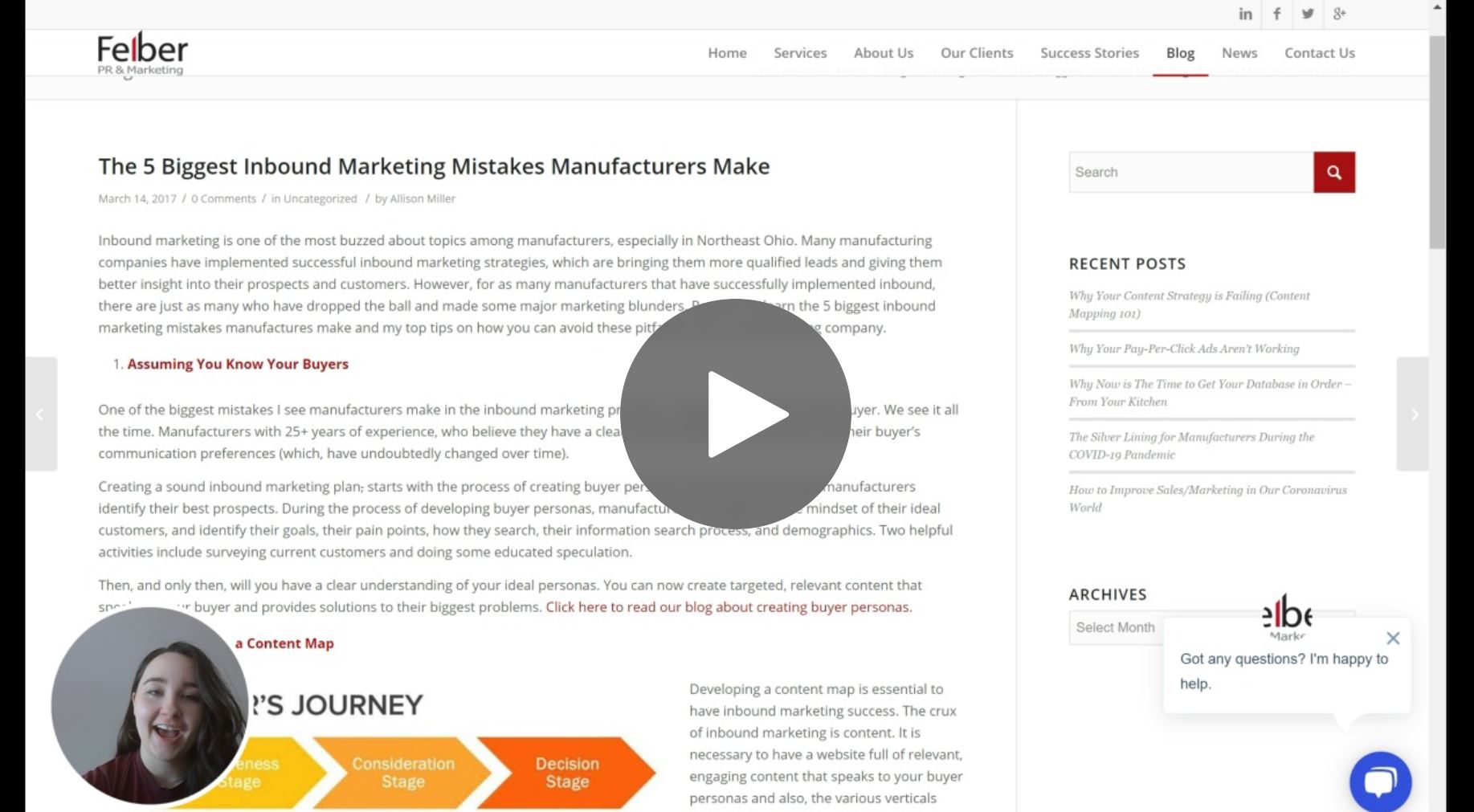The Most Common Mistakes Manufacturers Make When Implementing Inbound Marketing
Inbound marketing is one of the most buzzed-about topics among manufacturers. Many manufacturing companies have implemented successful inbound marketing strategies, which are bringing them more qualified leads and giving them better insight into their prospects and customers. However, for as many manufacturers that have successfully implemented inbound, there are just as many who have dropped the ball and made some major marketing blunders. Keep reading to learn the top inbound marketing mistakes manufacturers make and my top tips on how you can avoid these pitfalls at your manufacturing company.
- Not Integrating Sales with Marketing
The beautiful thing about inbound is that it ties sales and marketing together. With an inbound m arketing platform, such as HubSpot, you can track your prospects and their behavior. In one, easy-to-view command center, you can look at prospects and customers individually and see what emails they’ve opened and clicked, where they’ve been on your website and what content they’ve downloaded.
arketing platform, such as HubSpot, you can track your prospects and their behavior. In one, easy-to-view command center, you can look at prospects and customers individually and see what emails they’ve opened and clicked, where they’ve been on your website and what content they’ve downloaded.
When integrating an inbound strategy, it is necessary to get sales onboard. By integrating CRM with an inbound platform, sales managers get a “360” view of who the prospect is and receives a valuable insight on that individual’s needs, wants, and goals. That way, when a sales rep reaches out to a prospect, he or she is equipped with solutions tailored to that prospect. When sales are disconnected from inbound, you will not see optimal ROI from your marketing efforts.
2. Eliminating Traditional PR & Marketing Tactics from Their Strategy
Inbound marketing allows manufacturers to track just about everything from website visitors to leads and sales. We’ve seen a lot of manufacturers dropping the ball on public relations thinking that inbound marketing is replacing the need for the name recognition and eyeballs publicity delivers. However, PR & traditional marketing (editorial, advertising, direct mail, etc.) have an important place in an inbound strategy. How you may ask? The first step in the inbound marketing process is to attract.
By exhibiting at a trade show, being featured in an industry publication, or by advertising in the right magazine, you are enhancing your brand. Going to a notable industry trade show or having a case study of yours featured in a respected industry publication is a great way to intrigue prospects and attract them to your website! Read my blog “Why Manufacturers Still Need Traditional PR & Marketing in a Digital World” for more information on the importance of inbound.
3. Underestimating the Power of Social
Many manufacturers are not tapping into the power of social media. If social isn’t integrated into your inbound marketing plan, you are missing out. You can write all the relevant content you want, but you still need to distribute that content. Social provides just the right mix of channels to broadcast your message. Let’s face it: we’re living and breathing in a social media driven world. More and more people are getting their news from Twitter instead of television news outlets and making connections on LinkedIn instead of cold calling or email introductions. If you read Rob’s blog on social selling, you’ll understand the impact social has on the sales process and how easily social selling incorporates into the manufacturing sales process.



Leave a Reply
Want to join the discussion?Feel free to contribute!